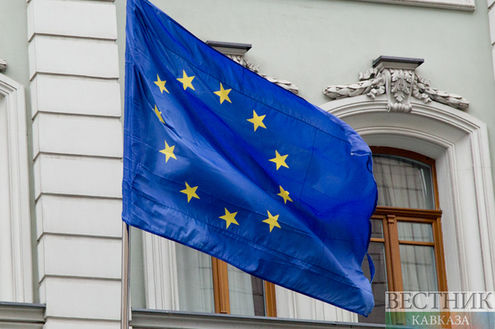On the eve of President Vladimir Putin’s address to the Federal Assembly, Russian government published detailed information on Russian national projects. Their total budget is estimated at 25.7 trillion rubles till 2024, with federal center providing most of the funds (13.1 trillion rubles), while private investors and regions provide 7.5 trillion and 4.9 trillion rubles respectively.
Azerbaijan is directly invlolved in three major projects: modernization of railways and highways along the North-South transport corridor; construction of the 330 kV Artem - Derbent power line, which will allow to increase electricity supply between the two countries; investments in the Caspian ports and the Volga-Don system.
Right now costs of national projects are the biggest in the post-Soviet history, covering almost 25% of GDP in 2018. Naturally, their implementation will affect the entire post-Soviet space, which is closely associated with Russian economy. Improved quality of life and business will be an additional factor in Russia's attractiveness for its neighbors, in addition to being largest economy in this part of Eurasia.
It is interesting that both strategies - implementation of national projects of the Russian Federation and the Action Plan for Development of Key Areas of Russian-Azerbaijani Cooperation - should be completed by 2024.
Both blocks of documents have some common points, forming macro-regional modernization plan. What's also important is that these documents affect not only Azerbaijan and the Eurasian Union. It's a serious and long-term strategy, and it's necessity has been discussed for a very long time. In a sense, it's an attempt to not just correct mistakes made after the collapse of the USSR, but also to catch up to global modernization trend.
Of course, implementation of these stategies will allow to improve and intensify cooperation between Russia and Azerbaijan at all levels. Small business support programs and social programs directly affect socio-economic atmosphere in Russia, and naturally this affects businesses of Azerbaijani diaspora. In turn, their activity stimulates expansion of Russian-Azerbaijani cooperation at higher levels. However, for now and in the future major government projects will be a priority. We will discuss some of them below.
Industrial exports
Here are some specific examples. “Roadmap” on creation of joint ventures derives from the National Project “International Cooperation and Exports”, supervised by the Ministry of Industry and the Russian Export Center. There are several projects in this area. First of all, SOCAR Polymer with Gazprombank investments. Second of all, the Hayat Farm pharmaceutical complex in the Pirallahy industrial park. This company will reach its projected goal in 2019 and will produce drugs for treatment of oncological, hematological, autoimmune endocrine diseases, HIV, and various types of viral hepatitis. Investments in this project estimated at over 70 million euros. Products from this plant will be supplied to the markets of the Middle East and North Africa. Logistically, this plant will be closer to this region, which was explained by existing tax policy in the region.
Third similar project is a joint assembly plant, created by AzerMas and the GAZ Group (Gorky Automobile Plant) in the Hajigabul industrial quarter. This plant is scheduled to be commissioned by the end of 2020. It's capacity will reach 1000 cars per year. Half of production will be used for exports to third countries: Iran, Georgia, Turkey, Kazakhstan. In other words, these new Russian-Azerbaijani enterprises plan expansion, taking into account foreign markets, which will strengthen the competitive advantages of both countries and their profits.
Transport
The biggest block of Russian projects is associated with infrastructure development plan with a total funding of 10.1 trillion rubles. How does road map on development of transport sphere of the two countries fit in? Transit projects are the most striking example of this cooperation. The North-South corridor (which covers distance from the Samur River border crossing to the North-West ports in the Baltic region) will allow to reduce transit time by two days (or 50 hours) by 2025. Russia is going to build about 40 modern multimodal centers, similar to those built by KDY Logistics together with the Russian Railways in Astrakhan (a railway hub, which handles fruits and vegetables).
Caspian Sea
It's also planned to increase volume of goods transported by the Volga-Don route by over 20 million tons (in 2018, transported volume amounted to about 16 million tons). Perhaps long-awaited construction of second part of the route will finally begin. However, costs of this project are not clear yet. Naturally, these investments will help the Azerbaijani shipping industry, as well as help to instensify competition between shipowners.
Energy
2019 will mark the end of construction of the 330 kV Artem - Derbent power line. Lotal length of the power line will reach 170 kilometers. This line is essential for stable power supply to the south of Dagestan, which population complains about low voltage and blackouts. There's huge demand for more electricity, this region needs at least additional 200 MW. Project's implementation won't just increase reliability of power supply to Dagestan, but will also increase energy transit capacity between Azerbaijan and Russia.
Tourism
Possible creation of joint travel services has been discussed for a long time. Russian's are a huge part of Azerbaijan's tourism sphere. But today tourism industries of the two countries have some common problems. Tourism only amounts to 3.4% of GDP in Russia. According to experts, almost 80% of all federal programs in the tourism industry turned out to be a failure. Azerbaijani tourism industry amounts to 2.2% of GDP, which is also far from ideal. Both countries have greater potential. Improving situation in this industry to at least 5-7% of GDP is possible in both countries. But it won't be solved thanks to just one five years plan.






